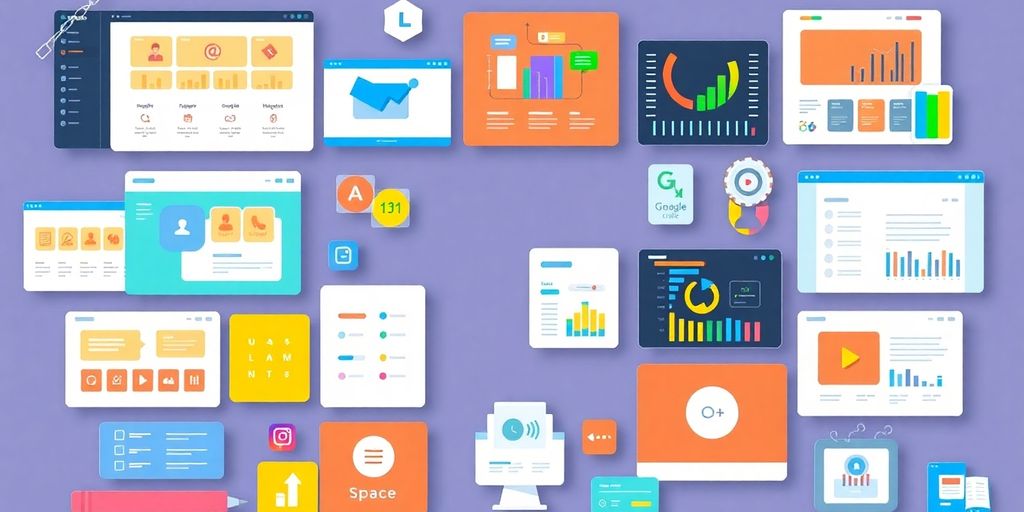Traditional Career Coaching Alternatives: Mentorship & Networking

Career development is often viewed through the lens of traditional coaching, but there are many other paths to success. Mentorship and networking have emerged as powerful alternatives, offering unique opportunities for personal and professional growth. In this article, we’ll explore various mentorship styles, the benefits of micro-coaching, the rise of virtual coaching, and how networking can serve as a fundamental tool in your career journey. Whether you’re just starting out or looking to pivot in your career, understanding these alternatives can significantly impact your professional life.
Key Takeaways
- Mentorship programs come in various forms, each offering distinct advantages for personal development.
- Micro-coaching provides quick, focused sessions that can fit into busy schedules, making it a flexible option for many.
- Virtual coaching has gained popularity, allowing mentorship to continue seamlessly regardless of location.
- Peer mentoring fosters a supportive environment where individuals at similar levels can share experiences and insights.
- Networking is essential for career growth, and utilizing social media can expand your professional connections significantly.
Understanding Mentorship Programs

Mentorship programs are becoming more common as companies look for ways to help their employees grow and develop. Mentorship can really boost how happy people are at work, and it can also help with things like diversity and getting people promoted. There are different kinds of mentorship programs, so it’s important to pick one that fits what your company needs.
Types of Mentorship Programs
There are a few main types of mentorship programs. Traditional mentorship is usually one-on-one, with someone more experienced guiding someone newer. Micro-coaching involves short, frequent sessions focused on specific questions or issues. Virtual coaching is great for remote teams, and peer mentoring pairs people with similar experience levels. Each type has its own advantages, so think about what will work best for your team.
Benefits of Mentorship
Mentorship can be a game-changer for both the mentee and the mentor. For mentees, it means getting personalized guidance, building confidence, and expanding their network. Mentors get to develop their leadership skills, share their knowledge, and feel good about helping someone else succeed. Plus, companies with strong mentorship programs often see better employee retention and a more engaged workforce.
Mentorship programs aren’t just about helping individuals; they’re about building a stronger, more connected company culture. When people feel supported and invested in, they’re more likely to stick around and contribute their best work.
Challenges in Finding a Mentor
Finding the right mentor can be tough. Sometimes it’s hard to find someone with the right experience or who has the time to commit. One of the biggest hurdles is simply making the connection in the first place. It’s important to be proactive, reach out to people you admire, and clearly communicate what you’re hoping to get out of the relationship. Don’t be afraid to network and explore different options until you find a good fit.
Exploring Micro-Coaching
Micro-coaching is gaining traction as a modern alternative to traditional mentorship. It’s all about short, focused interactions that provide quick guidance and support. Think of it as a series of mini-mentoring sessions designed to fit into a busy schedule. It’s less formal and structured, making it easier to integrate into the daily workflow.
Definition and Purpose
Micro-coaching is defined by its brevity and frequency. Instead of long, drawn-out meetings, it involves short, targeted conversations focused on specific issues or questions. The purpose is to provide timely support, answer immediate questions, and keep the mentee on track without overwhelming them. It’s about making mentorship more accessible and less intimidating.
Benefits of Micro-Coaching
Micro-coaching offers several advantages:
- Agility: It allows for quick adjustments and course corrections.
- Accessibility: It’s easier to schedule and fit into busy schedules.
- Reduced Overwhelm: Short sessions are less intimidating and easier to digest.
Micro-coaching is particularly useful in fast-paced environments where employees need immediate answers and guidance. It fosters a culture of continuous learning and support, making it easier for individuals to seek help when they need it.
When to Use Micro-Coaching
Micro-coaching is ideal in several situations:
- When mentors have limited time but want to stay engaged.
- When mentees need frequent, short bursts of guidance.
- When addressing specific, immediate challenges.
It’s also great for organizations that want to promote a culture of continuous feedback and support. For example, Alexandra Breckenridge’s career could have benefited from micro-coaching when she transitioned into directing, providing her with quick, targeted advice on navigating the new role.
The Rise of Virtual Coaching
The way we work is changing, and coaching is changing with it. Virtual coaching is becoming super popular, and it’s easy to see why. It brings mentors and mentees together, no matter where they are. It’s a great option if your company has employees all over the place.
Advantages of Virtual Mentorship
Virtual mentorship has a lot going for it. First off, it’s flexible. People can connect when it works for them, which is a big deal when everyone’s schedules are packed. It also opens up a bigger pool of mentors. You’re not limited to people in your office or even your city. Plus, it can save money on travel and meeting spaces.
- Increased accessibility
- Wider mentor pool
- Cost-effective
Tools for Virtual Coaching
To make virtual coaching work, you need the right tools. Video conferencing is a must for face-to-face chats. Project management software can help keep track of goals and progress. And don’t forget about instant messaging for quick questions and check-ins. Some platforms even have special features just for coaching, like shared whiteboards and document collaboration.
Best Practices for Virtual Sessions
Virtual sessions need a little extra planning to be effective. Make sure everyone has a quiet place to talk without distractions. Set clear goals for each session, and stick to an agenda. And don’t forget to build a personal connection. It can be harder to do online, but it’s still important to build trust and rapport.
It’s important to remember that virtual coaching is still coaching. The same principles apply: listen actively, ask good questions, and provide honest feedback. The only difference is that you’re doing it through a screen.
Peer Mentoring Dynamics
What is Peer Mentoring?
Peer mentoring is a bit different from the usual mentor-mentee setup. Instead of a senior figure guiding someone newer, it’s about two people on roughly the same level helping each other out. Think of it as a collaborative partnership where both individuals bring their own experiences and insights to the table. It’s all about mutual growth and support.
Benefits of Peer Mentoring
Peer mentoring can be surprisingly effective. Here’s why:
- Shared Experiences: Peers often face similar challenges, making it easier to understand and empathize with each other’s struggles.
- Safe Space: It can be less intimidating to ask for help or share vulnerabilities with someone who isn’t in a position of authority.
- Diverse Perspectives: Even if peers have similar roles, they likely have different backgrounds and approaches, leading to fresh ideas. This can improve talent retention.
- Increased Confidence: Helping someone else can boost your own self-esteem and reinforce your knowledge.
How to Establish a Peer Mentoring Program
Setting up a peer mentoring program doesn’t have to be complicated. Here’s a simple framework:
- Define Goals: What do you want participants to achieve? Be specific.
- Match Participants: Consider skills, interests, and personality when pairing people up. Compatibility is key.
- Provide Structure: Offer guidelines, discussion prompts, and resources to help mentors and mentees get the most out of the experience. Regular check-ins are important. Micro-coaching involves short but frequent mentorship sessions.
- Offer Training: Equip participants with the skills they need to be effective mentors and mentees, such as active listening and giving constructive feedback.
- Gather Feedback: Regularly ask participants about their experiences and make adjustments as needed. This ensures the program remains relevant and beneficial.
Peer mentoring can be a powerful tool for building a supportive and collaborative work environment. It’s a great way to foster a sense of community and help employees grow, both personally and professionally. It’s also a great way to build effective networking strategies.
Networking as a Career Development Tool

Importance of Networking
Networking is super important for your career. It’s not just about collecting business cards; it’s about building real relationships. A strong network can open doors to opportunities you might not find on a job board. Think of it as having a group of people who can offer advice, share insights, and even connect you with potential employers. It’s like having a personal advisory board for your career.
- Gain different perspectives from people in and outside your field.
- Learn about new skills and approaches.
- Hear about different career opportunities.
Networking isn’t about being fake or just trying to get something from someone. It’s about building genuine connections and offering value to others as well. It’s a two-way street where everyone benefits from the relationship.
Effective Networking Strategies
So, how do you actually network effectively? It’s more than just showing up at events. Preparation is key. Research people you want to meet beforehand. Have a clear idea of what you’re hoping to achieve. And most importantly, be genuinely interested in learning about others. Here are some ideas:
- Attend industry events and conferences.
- Join professional organizations.
- Reach out to people on LinkedIn for informational interviews.
Leveraging Social Media for Networking
Social media, especially LinkedIn, is a powerful tool for networking. It allows you to connect with people all over the world and stay up-to-date on industry trends. You can use it to find profitable niche opportunities. But it’s not enough to just create a profile and wait for people to connect with you. You need to be active and engaged. Share relevant content, participate in discussions, and reach out to people you want to connect with.
- Update your profile regularly.
- Join relevant groups and participate in discussions.
- Share valuable content and insights.
| Platform | Best Use |
|---|---|
| Professional networking, job searching | |
| Industry news, quick updates | |
| Connecting with personal contacts |
Reverse Mentoring: A New Approach
Reverse mentoring is shaking things up! It’s not your typical mentor-mentee relationship. Instead of seasoned pros guiding newbies, it’s the younger or less experienced folks sharing their knowledge with senior staff. Think of it as a fresh take on how we learn and grow in the workplace.
Concept of Reverse Mentoring
So, what’s the big idea? Reverse mentoring flips the script. It’s all about junior employees mentoring senior ones, especially in areas like tech, social media, or current trends. This helps bridge the knowledge gap and keeps leaders in touch with what’s new and relevant. It’s a way to tap into the skills and perspectives that might otherwise be overlooked. It’s not just about teaching; it’s about creating a two-way street for learning.
Benefits for Both Parties
It’s a win-win! Senior leaders get to learn about new technologies, emerging trends, and different perspectives. Junior employees get a chance to shine, build confidence, and network with higher-ups. Plus, it can boost morale and create a more inclusive workplace culture. Here’s a quick breakdown:
- Senior Employees: Learn new skills, gain fresh perspectives, stay relevant.
- Junior Employees: Build confidence, improve communication skills, expand their network.
- Organization: Promotes innovation, enhances employee engagement, fosters a culture of continuous learning.
Implementing Reverse Mentoring Programs
Okay, so how do you actually make this happen? First, identify the skills or knowledge areas where reverse mentoring could be beneficial. Then, carefully match mentors and mentees based on their needs and interests. Provide training and support to both parties to ensure the program runs smoothly. And most importantly, create a safe and open environment where everyone feels comfortable sharing their ideas. Consider these steps:
- Identify Needs: Determine what skills or knowledge gaps exist within the organization.
- Match Mentors & Mentees: Pair individuals based on complementary skills and interests.
- Provide Training: Equip participants with the tools and knowledge they need to succeed.
Reverse mentoring isn’t just a trend; it’s a way to build a more connected, innovative, and inclusive workplace. It’s about recognizing that learning can happen in any direction and that everyone has something to offer. By embracing this approach, organizations can unlock new levels of growth and success. It can also help with financial education in the workplace.
Utilizing Online Resources for Career Growth
Types of Online Resources
The internet is overflowing with resources that can seriously boost your career. We’re not just talking about job boards (though those are important, too!). Think about online courses, industry-specific blogs, webinars, and even professional networking platforms. Each resource type plays a different role in your development. For example, online courses can help you gain new skills, while blogs keep you updated on industry trends. It’s about finding the right mix to support your goals. You can find a mentor cruise online to help you navigate these resources.
Benefits of Online Learning
Online learning offers a ton of advantages, especially for busy professionals. The biggest one is flexibility. You can learn at your own pace, on your own schedule, which is a game-changer if you’re juggling work, family, and other commitments. Plus, online courses are often more affordable than traditional classroom settings. You also have access to a wider range of subjects and instructors, no matter where you’re located. It’s a great way to upskill or reskill without disrupting your life too much.
How to Choose the Right Online Platform
Choosing the right online platform can feel overwhelming, but here are a few things to keep in mind:
- Consider your learning style: Do you prefer video lectures, interactive exercises, or reading materials? Look for a platform that offers the format that works best for you.
- Read reviews and testimonials: See what other learners have to say about the platform and its courses. This can give you valuable insights into the quality of the content and the support provided.
- Check the credentials of the instructors: Make sure the instructors are experts in their field and have a proven track record of success.
Don’t be afraid to try out a few different platforms before committing to one. Many platforms offer free trials or introductory courses, so you can get a feel for the learning environment and see if it’s a good fit for you. Remember, the goal is to find a platform that supports your learning goals and helps you achieve your career aspirations.
Wrapping It Up: The Power of Mentorship and Networking
In the end, mentorship and networking are more than just buzzwords; they’re real tools that can help you grow in your career. Whether you’re looking for guidance from someone who’s been there or just trying to connect with others in your field, these alternatives to traditional career coaching can make a big difference. They offer support, open doors, and help you learn in ways that formal coaching sometimes can’t. So, don’t underestimate the value of building relationships and seeking out mentors. Dive in, get involved, and watch how these connections can shape your professional journey.
Frequently Asked Questions
What are mentorship programs?
Mentorship programs are structured ways for experienced people to guide those who are less experienced in their careers. They help individuals grow and learn from each other.
What types of mentorship programs are there?
There are many types of mentorship programs, including traditional one-on-one mentoring, peer mentoring, and group mentoring where multiple mentees learn together.
How can mentorship benefit my career?
Having a mentor can help you gain valuable insights, improve your skills, and increase your job satisfaction. Mentors can also help you network and find new opportunities.
What is micro-coaching?
Micro-coaching involves short, focused sessions where a mentor helps a mentee with specific questions or challenges. It’s less formal and can happen more often.
Why is networking important for career growth?
Networking helps you meet new people in your field, learn from their experiences, and discover job opportunities. It builds relationships that can support your career.
What is reverse mentoring?
Reverse mentoring is when a younger or less experienced person mentors someone older or more experienced. This can help share new ideas and knowledge, especially about technology.








Responses